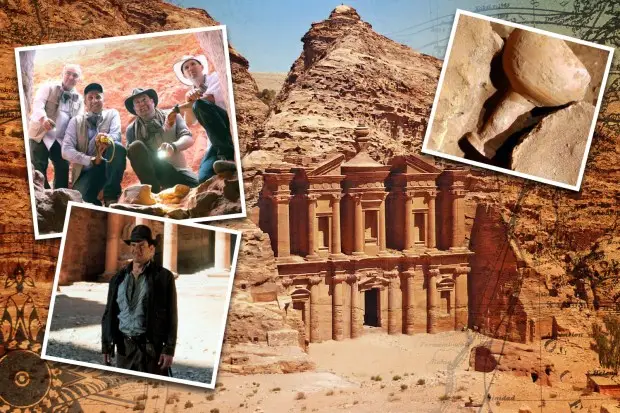ARCHAEOLOGISTS have found a secret tomb underneath the landmark Petra – a World Wonder and Indiana Jones film setting.
Twelve bodies have been found in the tomb, with one of them holding a chalice that resembles the Holy Grail.
Diggers excavated the 2,000-year-old grave after finding it through a sonic underground search.
In Petra's tomb they also found bits of bronze, iron, and other bits of ceramic items.
Hundreds more items are expected to be recovered as excavation continues, according to lead archaeologist Dr. Pearce Paul Creasman.
Creasman said his team dated the grave to the first century BC using luminescence dating, which tracks the last exposure of minerals to sunlight.
Many other tombs have been discovered across Petra, but it is rare to be able to excavate the bodies.
Josh Gates, host of Discovery Channel’s Expedition Unknown, was part of the dig.
Gates said: "This is a hugely rare discovery — in the two centuries that Petra has been investigated by archaeologists, nothing like this has been found before.
“Even in front of one of the most famous buildings in the world … there are still huge discoveries to be made.”
Creasman said the discovery could help unlock clues about ancient Arab society.
He said: "The Nabateans were a multicultural trading society who only worked because they united as a people. I hope they might be able to teach us something today."
Located in modern day Jordan, Petra was built in the 1st century BC and was inhabited by about 20,000 people at its peak.
The building is called Khaznah, or the Treasury, and was built by nomadic Arabians, called the Nabataeans, in about 100BC.
Petra’s Treasury was named as such because of an early theory that it held the treasure of an Egyptian pharaoh.
Most researchers today believe that it was a tomb built by Nabataean King Aretas IV, who ruled from about 9BC to 40 AD.
It is a hit tourist destination with visitors having to walk through a small canyon that hides the building before they arrive.
Petra might be recognisable to most people for its starring role in Steven Spielberg's 1989 sequel Indiana Jones and the Last Crusade.
Normally, great cities are based near rivers, allowing easy access to the water which is the lifeblood of any human settlement.
Petra, on the other hand, enjoyed a maximum 15cm of rainfall every year, forcing its inhabitants to develop water management systems which appear impressive to this very day.

